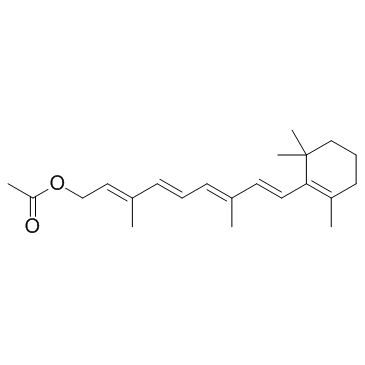A randomized controlled trial to assess the impact of dietary energy sources, feed supplements, and the presence of super-shedders on the detection of Escherichia coli O157:H7 in feedlot cattle using different diagnostic procedures.
Natalia Cernicchiaro, David L Pearl, Scott A McEwen, Henry N Zerby, Francis L Fluharty, Steve C Loerch, Michael D Kauffman, Jaime L Bard, Jeffrey T LeJeune
Index: Foodborne Pathog. Dis. 7(9) , 1071-81, (2010)
Full Text: HTML
Abstract
Alteration of the gastro-intestinal tract through manipulation of cattle diets has been proposed as a preharvest control measure to reduce fecal shedding of Escherichia coli O157:H7. The objective of this study was to examine the effects of the energy source's moisture content (high moisture corn and dry whole-shelled corn), two natural feed supplements (Saccaromyces cerevisiae boulardii CNCM 1079-Levucell and Aspergillus oryzae-Amaferm), and two levels of vitamin A (2200 IU/kg and no supplementation) on the fecal excretion of E. coli O157:H7 in naturally infected cattle. One hundred sixty-eight Angus-cross beef steers were randomly allocated to 24 pens, and each pen was assigned 1 of 12 dietary treatments in a randomized complete block design. E. coli O157:H7 was detected by rectoanal mucosal swab (RAMS) and fecal grab samples using immunomagnetic separation (IMS) and standard microbiological techniques. On the basis of multivariable multilevel logistic regression models, we found a statistically significant (p < 0.05) increase in the prevalence of E. coli O157:H7 in animals fed dry whole-shelled corn in models based on fecal-IMS, and this effect was increased if a super-shedding animal (shedding > 10(4) colony forming units of E. coli O157:H7 per gram of feces) was present in the pen at the time of testing relative to animals fed high moisture corn and nonexposed to super-shedders. However, in similar models based on RAMS-IMS testing, the effect of corn type on the prevalence of E. coli O157:H7 varied with the type of feed additive used. Being exposed to a super-shedding pen-mate also increased the odds of being positive to E. coli O157:H7 in the RAMS-IMS models. These models demonstrate that the impact of different supplements may vary with the diagnostic test used, and that further research into the biological significance of differences between RAMS- and fecal-IMS test results is warranted.
Related Compounds
| Structure | Name/CAS No. | Molecular Formula | Articles |
|---|---|---|---|
 |
Retinyl acetate
CAS:127-47-9 |
C22H32O2 |
|
Simultaneous analysis for water- and fat-soluble vitamins by...
2014-10-03 [J. Chromatogr. A. 1362 , 270-7, (2014)] |
|
Effects of microbial phytase on apparent and standardized to...
2015-05-01 [J. Anim. Sci. 93 , 2255-64, (2015)] |
|
Ultra-performance liquid chromatographic determination of to...
2014-10-01 [J. Chromatogr. Sci. 52(9) , 1065-70, (2014)] |
|
DEVTA: results from the biggest clinical trial ever.
2013-04-27 [Lancet 381(9876) , 1439-41, (2013)] |
|
An optimized and validated RP-HPLC/UV detection method for s...
2010-09-01 [J. Chromatogr. B. Analyt. Technol. Biomed. Life Sci. 878(25) , 2339-47, (2010)] |